The secret of water ganache
•Posted on November 19 2023
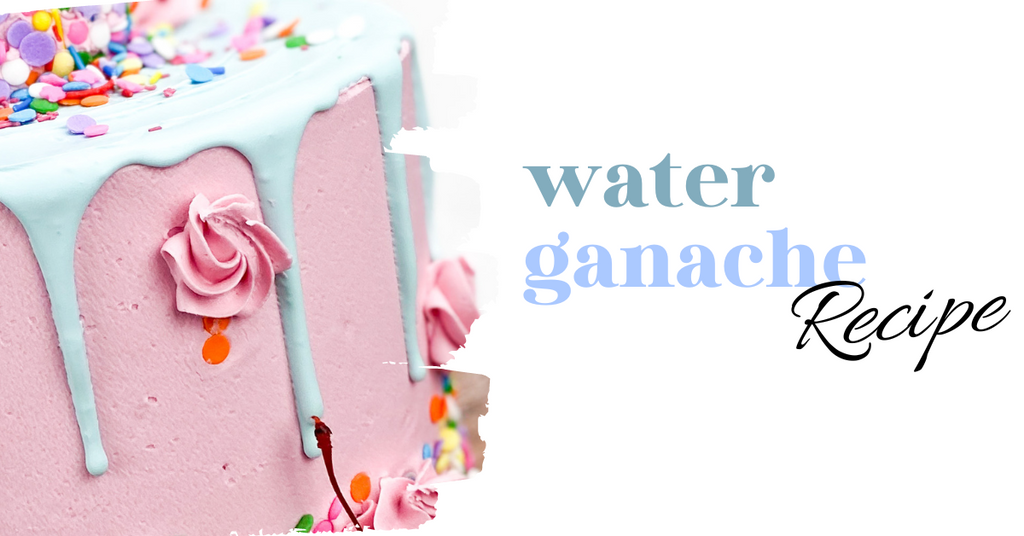
I’ve been working on mastering a drizzle that I’m happy with for a while, and it’s been a bit of a journey. I do sometimes have “beginners’ luck” in the kitchen when working with a new recipe – I knock it out of the park the first time, and then must work to recreate that magic, wondering what I did to make it so perfect at first!
I started with a simple royal icing, which worked wonderfully – sometimes. I’m not a royal icing expert, so getting the consistency perfectly right so that I could have drips that travelled but didn’t run, was a challenge. I also found sometimes my royal icing drizzle would appear to be set, only to come back a few hours later to find it had travelled a miniscule amount further and broken the rounded ball at the bottom of the drizzle, making an ugly jagged end. Cue my sad face.
Then I tried straight melted chocolate. Our compound chocolates make beautiful shards and are great for dipping pops, and they made OK drips too – but if I ever wanted to paint them, I found the drips had a waxy surface that rejected my metallic lustre paints.
Finally – whilst I was meandering my way around the internet one day, I made a discovery that shocked me.
Water ganache.
Everything I learnt about ganache said you can’t get water anywhere near it, it will seize your chocolate and destroy your silky ganache. It’s one of the reasons I never use a double boiler when melting chocolate, in case any condensation happens to find its way in there and ruin things.
So, when I saw a water ganache recipe – I was skeptical. But why not give it a try, I thought, nothing else has worked perfectly yet.
So, I took a scientific approach. Using a thermometer and my kitchen scales, I got to work.
I measured out our nestle white chocolate buttons and water in to a microwave proof measuring cup, and melted on low heat in the microwave until combined.
After chilling my cake and allowing my water ganache to come down to between 30-35deg Celsius, I gave it a go.
Perfect. Drip.
The most non-fuss drizzle yet, and I’ve managed to repeat it consistently!
RECIPE
Just like our normal cream ganache, this recipe is really simple. It’s a ratio of 1:6 - that is, one part water to six parts chocolate. In my case, I find the following makes a suitable amount for a drizzle.
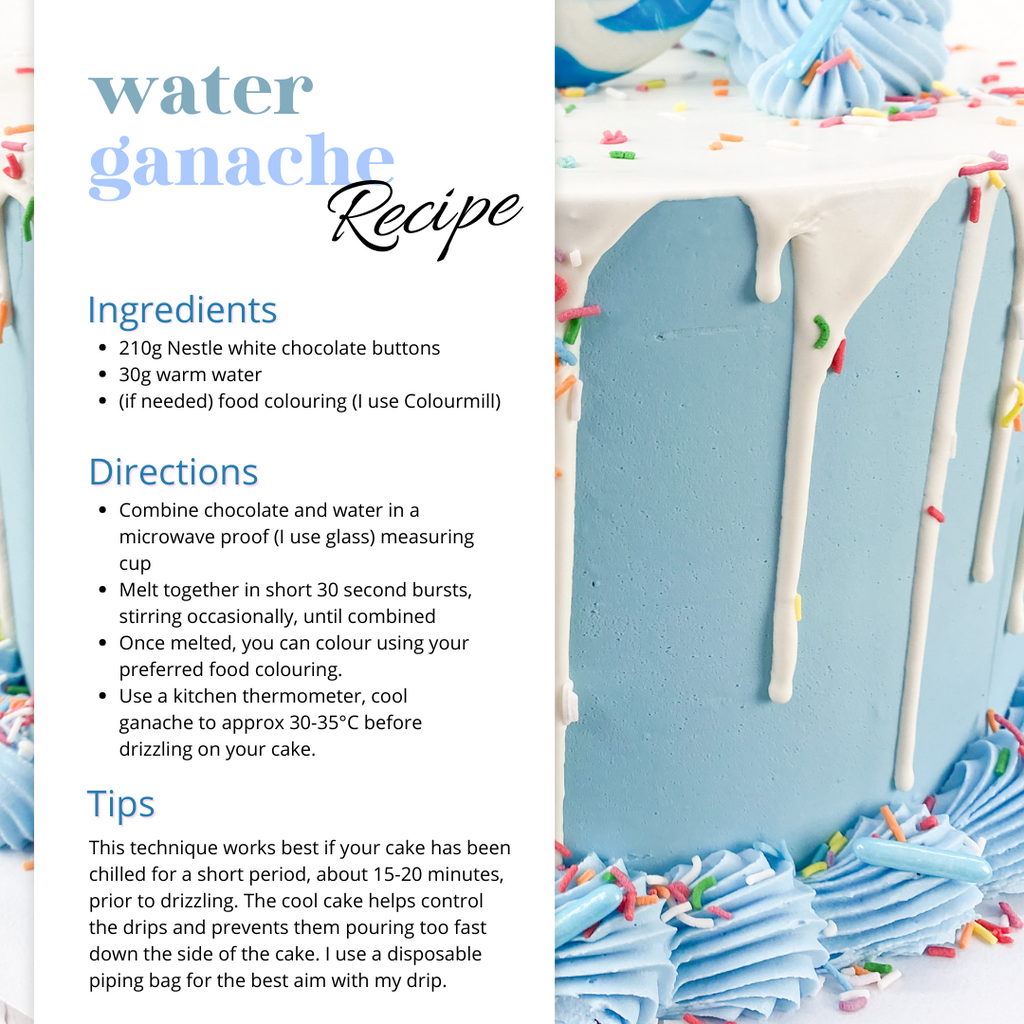
INGREDIENTS
- 210g Nestle white chocolate buttons
- 30g warm water
- (if needed) food colouring (I use Colourmill)
TECHNIQUE
- Combine chocolate and water in a microwave proof (I use glass) measuring cup
- Melt together in short 30 second bursts, stirring occasionally, until combined
- Once melted, you can colour using your preferred food colouring. I like using an oil based colouring, such as Colourmill, for any ganache.
- Use a kitchen thermometer, wait until your water ganache is approximately 30-35degrees celsius before attempting to drizzle on your cake.
- This technique works best if your cake has been chilled for a short period, about 15-20 minutes, prior to drizzling. The cool cake helps control the drips and prevents them pouring too fast down the side of the cake.
- I use a disposable piping bag for the best aim with my drip.
Why does this work?
I feel like my world has been rocked a little! I’ve been making ganache for 10 years but never delved deeper into the technicalities of the recipe beyond my immediate needs of filling and stacking cakes.
I always thought that ANY water in ganache would absolutely ruin it, causing the chocolate to seize.
That is still the case to some extent, as I have learned it is all a matter of the ratio. If you add a small amount of water to melted chocolate, it will seize. That’s why you need to be careful when using a double boiler to melt chocolate in case any condensation makes its way into your batch.
The water ganache uses a much higher ratio of liquid compared to our usual ganache recipe. In water-based ganache, enough water is mixed into chocolate to create an oil-in-water emulsion (meaning, the fats from the chocolate are sufficiently dispersed in the water and won’t seize).
The verdict?
I haven’t discovered anything new here – in fact I have really proven to myself that I tend to be a little ‘head in the sand’ when it comes to finding something that works from me and not exploring much further.
I suppose its no surprise, considering baking is such a science and an art, that there was more to the story when it comes to ganache! New possibilities are always exciting, and I’m sure our dairy-free customers will appreciate this new addition to our repertoire.
Mostly, I’m excited to keep making consistent and pretty drizzle cakes!
Sources
I found this article by Buttery. Salted. Caramel. really insightful in to the inner science of chocolate and ganache.




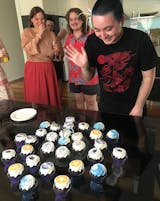
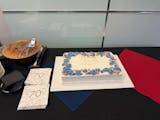
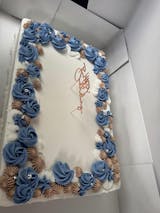
Comments
0 Comments
Leave a Comment